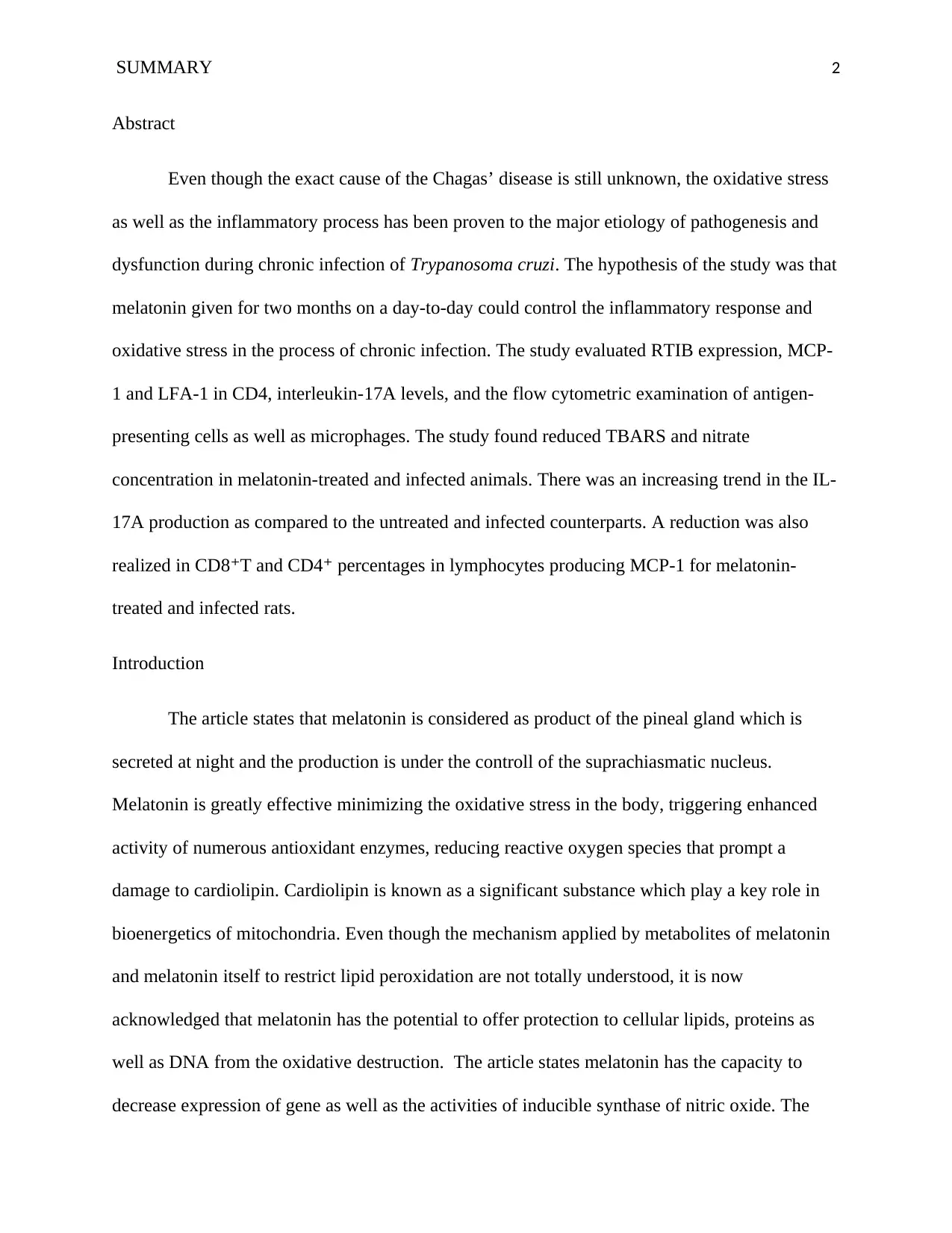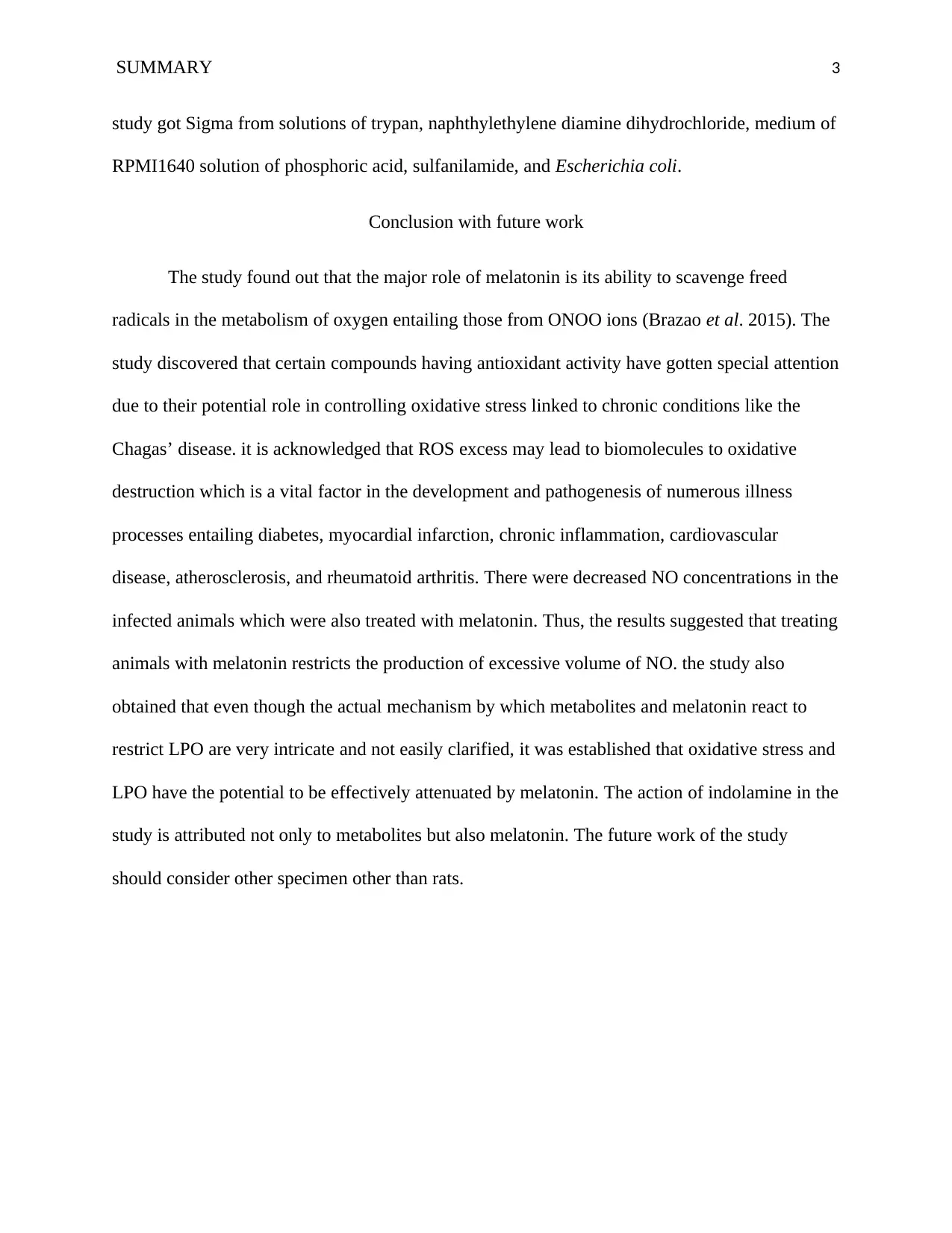University Research Summary: Melatonin and Trypanosoma Cruzi Infection
VerifiedAdded on 2023/01/13
|4
|633
|61
Report
AI Summary
This report summarizes a study investigating the effects of melatonin on chronic Trypanosoma cruzi infection, commonly known as Chagas' disease. The research hypothesized that daily melatonin administration could modulate oxidative stress and inflammatory responses associated with the disease. The study evaluated various parameters, including lipid peroxidation, nitric oxide production, interleukin-17A levels, and the expression of specific cell markers in lymphocytes and antigen-presenting cells. Results indicated that melatonin treatment decreased oxidative stress markers and influenced the production of inflammatory cytokines. The study concludes that melatonin can potentially mitigate oxidative stress and inflammatory processes in the context of Chagas' disease, suggesting a possible therapeutic role. Future research should consider other specimen other than rats.
1 out of 4






![[object Object]](/_next/static/media/star-bottom.7253800d.svg)